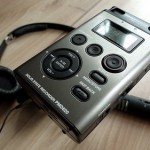What is it?
In this sense, Audio refers to sound recordings that are shared with students in some way, typically through Blackboard. The recordings could be speech, music, ambient sounds, etc. or a mix of these.
Uses for Audio
There are many uses for audio in Learning, Teaching and Assessment, both by students and staff. These include:
- Assignment feedback – general or individual
- Teaching materials, such as performances, case study materials, etc.
- Lecture recordings
- Recording (telephone or in-person) interviews with experts
- Student reflections (‘audio diaries’)
- Producing a record of meetings, tutorials, and discussions
Benefits of Using Audio
There are many benefits that the use of audio can bring, such as:
- Increased efficiency of producing feedback vs typing
- More nuanced information through tone and pace vs text
- Helps international students develop their spoken English skills by repeated listens
- Feels more personal to students (even when it is general information)
- Allows performances and interviews to be shared with students more effectively
- Students can listen to recordings while commuting or doing other tasks
- Builds rapport between the listener and the speaker, especially in distance learning
- Research suggests that multi-sensory information aids learning by spreading the load across different parts of the brain
How to Get Started
In many cases all you will need to get started is a microphone and software to save the information you are are recording. All PCs at SHU have software called Audacity installed which is a very simple sound recorder and editor. You could also use a dedicated audio recorder, smartphone or tablet computer to record audio when away from your PC.
Free-to-share (Creative Commons) music in many different styles and genres can be found at Jamendo.com and free-to-reuse audio clips and sound effects are available at Freesound.org. A large number of free-to-share audio files, including audiobook, radio programmes, music, debates, etc., are available at the Internet Archive.
Ideally, any audio files you produce should be saved in the MP3 format, because this is supported by all computers and the vast majority of other devices capable of playing audio (such as iPods and smartphones). These files can easily be uploaded to Blackboard and accessed by students. The Audacity software can save directly to MP3, but for other file types you can use online conversion tools, such as the one at online-audio-converter.com – however, remember that this means sending the file to a third-party, so isn’t advisable for sensitive files such as assessment feedback.





Pingback: Critiquing: An Approach to Teaching and Learning | e-learning at Sheffield Hallam
Pingback: Reflection: An Approach to Teaching and Learning | Technology Enhanced Learning at SHU